|
Recent Press Stories
July 18, 2020 — OPINION – By Richard Spotts:
Nevada should challenge Utah’s move for a Lake Powell pipeline — In politics, what goes around can and sometimes should come around. A case in point is the Desert National Wildlife Refuge (DNWR) and Lake Powell Pipeline (LPP) — thenevadaindependent.com
July 11, 2020 — LETTER TO THE EDITOR: Utah pipeline hurts Nevada — Nevada should challenge the Lake Powell Pipeline because it would promote Utah’s wasting of precious Colorado River water when deliveries to Nevada are being cut back. Nevada relies heavily on Colorado River water . . . Las Vegas Sun Print PDF 
June 08, 2020 — Lake Powell pipeline will ‘make the river angry,' Southern Paiutes warn as feds release analysis — Any potential alignment of the Lake Powell pipeline would pass through lands that hold spiritual and cultural significance to Southern Paiutes, who fear the project would jeopardize their culture and upset the balance of nature — sltrib.com
April 16, 2020 — Kane County [Utah] pulls out of Lake Powell Pipeline project ahead of federal review — The Kane County Water Conservancy District has decided to pull out of the Lake Powell Pipeline project, leaving Washington County as the sole proposed user of the pipeline going forward. The decision comes as the federal government continues and environmental review of the project. The Bureau of Reclamation is developing an environmental impact statement (EIS) for the project as required by the National Environmental Policy Act. The NEPA process will determine if the project will go forward and what route it will take — thespectrum.com
September 26, 2019 — In major move, Utah pulls most hydropower out of Lake Powell pipeline — Utah’s proposed Lake Powell pipeline will cost less to build and be easier to permit under a decision announced Wednesday to cut major hydropower components from the controversial project that would move 86,000 acre-feet of Colorado River water to St. George – sltrib.com
June 13, 2019 — Utah Presses Forward With Pipeline Plans Despite Colorado River Basin Constraints — The drive behind a massive water development project in southwestern Utah, the Lake Powell Pipeline, shows no signs of slowing even after the Colorado River Basin states signed a new agreement this spring that could potentially force more conservation or cutbacks — kpbs.org
January 27, 2019 — [Salt Lake] Tribune editorial: If we build Powell pipeline, will the water come? — The Colorado River is not meeting its obligations. Its Lake Powell bank account is in danger of running dry. A 97-year-old agreement demands that the river deliver 5.2 trillion gallons of water to seven states and Mexico each year. That isn’t happening, and now — in the age of climate change — the chance of ever meeting that demand is fading — sltrib.com
October 29, 2018 — The precarious plan for the Lake Powell Pipeline — Nearly a decade ago, Gabriel Lozada, a man with a wiry frame and waves of steel-gray hair who looks exactly like the mathematician he is, set out to answer what he thought was a relatively simple question: Could Utah’s proposed Lake Powell Pipeline — a plan to ferry Colorado River water to southern Utah — live up to the state’s rosy forecasts of growth and prosperity? Or was it more likely to tank the economy of a small but lively retirement community in the southwestern Utah desert? — hcn.org
September 25, 2018 — [Salt Lake] Tribune editorial: As flow gets low and permits get slow, will Lake Powell pipeline still go? — By the time the Lake Powell pipeline is built, will there be enough water to put in it? In a split decision, the Federal Energy Regulatory Commission ruled last week that its oversight of any pipeline project would be limited to the hydroelectric dams that may be built along the pipeline route — sltrib.com
September 20, 2018 — Federal agency declines to handle all permitting for Lake Powell Pipeline — The federal agency that had been handling the permitting process for the Lake Powell Pipeline announced Thursday it doesn't have jurisdiction to handle the entire project on its own. The Federal Energy Regulatory Commission submitted an order indicating it would only consider permitting for the hydroelectric facilities proposed for the project, and not the remaining 89 miles of connecting water delivery pipelines, although it would continue as the lead agency in charge of environmental analysis. Environmental organizations, taxpayer watchdog groups and others opposed to the project celebrated the decision, arguing it could potentially set back the permitting process and require better scrutiny of the project plans —
August 14, 2018 — Utah's Big Water Grab . . . To keep the water flowing, the state plans to dip a six-foot-diameter straw into Lake Powell—a reservoir of the Colorado River 140 miles to the east—then suck the water 2,000 vertical feet through five pumping stations and six hydroelectric plants, crossing the Paria River and what used to be Grand Staircase–Escalante National Monument — outsideonline.com
July 30, 2018 — Utahns Move Toward Water Conservation While Keeping An Eye On Lake Powell Pipeline . . . Utah's also pushing forward with a plan to tap more water from the Colorado River to serve two counties in the southwestern corner of the state. And that raises at question: Does Utah really need so much water? — kunm.org
June 15, 2018 — My Turn: Lake Powell Pipeline: Unaffordable, unreliable, unnecessary — The recent presentation in Kanab by Paul Van Dam, retired Utah Attorney General, and Lisa Rutherford demonstrated that the proposed Lake Powell Pipeline is unaffordable, unreliable, and unnecessary. If it is built, this multibillion dollar water project would serve Washington and Kane Counties, what is now only 5% of the population of Utah — thespectrum.com
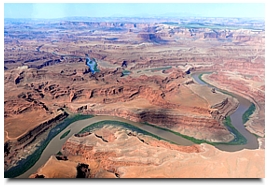 January 28, 2018 — Utah spent $33 million on a pipeline application it never finished. The feds approved it anyway — If you’re hoping to understand Utah’s drive to build the massive Lake Powell pipeline and what it might cost you, don’t start with the state’s explanation of it all to the U.S. government. The thousands of pages Utah produced to justify the 140-mile, multibillion-dollar pipeline from Lake Powell to water districts in two southwestern Utah counties are inscrutable to most involved — the project’s opponents, government regulators, and even some of the people who wrote the documents — sltrib.com
January 28, 2018 — Utah spent $33 million on a pipeline application it never finished. The feds approved it anyway — If you’re hoping to understand Utah’s drive to build the massive Lake Powell pipeline and what it might cost you, don’t start with the state’s explanation of it all to the U.S. government. The thousands of pages Utah produced to justify the 140-mile, multibillion-dollar pipeline from Lake Powell to water districts in two southwestern Utah counties are inscrutable to most involved — the project’s opponents, government regulators, and even some of the people who wrote the documents — sltrib.com
 January 23, 2017 — Utah is headed into a water battle it can’t win — While states along the Colorado River plan for future shortages, Utah is betting on a big new diversion of water stored behind Glen Canyon Dam. It’s called the Lake Powell Pipeline, and last month the Federal Energy Regulatory Commission accepted Utah’s licensing application to drain water from the reservoir. The federal agency’s acceptance triggers a new environmental analysis and public comment process for what would become the largest new diversion of the Colorado River. Costing billions of dollars, this would also be one of the state’s most expensive infrastructure projects — hcn.org [by Eric Balken, Eric is a contributor to Writers on the Range, the opinion service of High Country News. He is the executive director of the Glen Canyon Institute in Salt Lake City]
January 23, 2017 — Utah is headed into a water battle it can’t win — While states along the Colorado River plan for future shortages, Utah is betting on a big new diversion of water stored behind Glen Canyon Dam. It’s called the Lake Powell Pipeline, and last month the Federal Energy Regulatory Commission accepted Utah’s licensing application to drain water from the reservoir. The federal agency’s acceptance triggers a new environmental analysis and public comment process for what would become the largest new diversion of the Colorado River. Costing billions of dollars, this would also be one of the state’s most expensive infrastructure projects — hcn.org [by Eric Balken, Eric is a contributor to Writers on the Range, the opinion service of High Country News. He is the executive director of the Glen Canyon Institute in Salt Lake City]
 January 16, 2018 — Plans for Utah Pipeline to Tap Colorado River Hit a Snag — A proposed pipeline would funnel Lake Powell water 140 miles to a growing region of Utah, but opponents question if imported water for the beleaguered Colorado is the best way to meet demand. A CONTROVERSIAL PIPELINE project that would pump Colorado River water to a rapidly growing corner of Utah passed a regulatory goal and also hit a regulatory snag on the same day, prompting the state to ask the federal government to delay further decisions until the snafu is worked out — newsdeeply.com
January 16, 2018 — Plans for Utah Pipeline to Tap Colorado River Hit a Snag — A proposed pipeline would funnel Lake Powell water 140 miles to a growing region of Utah, but opponents question if imported water for the beleaguered Colorado is the best way to meet demand. A CONTROVERSIAL PIPELINE project that would pump Colorado River water to a rapidly growing corner of Utah passed a regulatory goal and also hit a regulatory snag on the same day, prompting the state to ask the federal government to delay further decisions until the snafu is worked out — newsdeeply.com
 January 06, 2018 — Utah reluctantly asks feds to push pause on the state’s Lake Powell Pipeline — In a letter to the Federal Energy Regulatory Commission, state officials ask that the massive water project be put on hold until feds clear up who has jurisdiction to approve it — www.sltrib.com
January 06, 2018 — Utah reluctantly asks feds to push pause on the state’s Lake Powell Pipeline — In a letter to the Federal Energy Regulatory Commission, state officials ask that the massive water project be put on hold until feds clear up who has jurisdiction to approve it — www.sltrib.com
December 17, 2017 — [Salt Lake] Tribune Editorial: Bureaucratic kinks may block the Lake Powell Pipeline. Good — sltrib.com
December 13, 2017 — Gehrke: Utah needs good data before taxpayers dive headfirst into Lake Powell pipeline scam — We live in a desert, one of the driest states in the nation. It’s a line repeated so often that it’s hardly questioned. And it’s not wrong. Utah is, indeed, the second-driest state in the country. And one of the fastest growing — sltrib.com
December 12, 2017 — Feds give initial OK to Utah’s application to build Lake Powell pipeline – but with a major, unexpected twist — Federal regulators have tentatively approved Utah’s application to build the Lake Powell Pipeline, but they’ve also thrown the state an unexpected curveball. On Tuesday, the Federal Energy Regulatory Commission (FERC) issued a notice that it had accepted Utah’s application to construct the 140-mile pipeline, intended to pump Colorado River water from Glenn Canyon Dam to St. George and 12 other southern Utah communities. That, FERC said, clears the way for a full study of the project’s environmental impacts — www.sltrib.com
December 03, 2017 — A county in Utah wants to suck 77 million gallons a day out of Lake Powell, threatening the Colorado River — un-scorched desert mesa, 140 miles of it, lies between Lake Powell, the nation’s second-largest reservoir, and Utah’s Washington County, one of America’s driest metropolitan regions. It’s a long way in miles — but not insurmountable to the Washington County Water Conservancy District, which is charged with ensuring a rapidly growing desert community has water. The district plans to link the reservoir and the county with one of the longest and most expensive water pipelines ever proposed in the West — LA Times
 October 20, 2017 — Lake Powell Pipeline will require state borrowing and higher water bills, Utah tells federal regulators — Specifics remain fuzzy, but a clearer picture is emerging of just how much Washington County residents might have to pay for water from the proposed Lake Powell Pipeline — and it isn’t going to be cheap. It’s also likely the state will have to borrow money to help pay for a majority of the southern Utah pipeline’s construction costs, judging from new documents filed with the Federal Energy Regulatory Commission (FERC) — www.sltrib.com
October 20, 2017 — Lake Powell Pipeline will require state borrowing and higher water bills, Utah tells federal regulators — Specifics remain fuzzy, but a clearer picture is emerging of just how much Washington County residents might have to pay for water from the proposed Lake Powell Pipeline — and it isn’t going to be cheap. It’s also likely the state will have to borrow money to help pay for a majority of the southern Utah pipeline’s construction costs, judging from new documents filed with the Federal Energy Regulatory Commission (FERC) — www.sltrib.com
October 20, 2017 — Utah submits more details on Lake Powell pipeline licensing — SALT LAKE CITY: Utah submitted additional paperwork on the proposed Lake Powell pipeline to the federal licensing agency conducting the review of the $1.3 billion project. The Federal Energy Regulatory Commission asked for additional details on cultural resources potentially impacted by the pipeline's 140-mile route, financial feasibility and cost impacts, as well as available per capita water-use data for the past six years — ksl.com
October 20, 2017 — How much will the Lake Powell Pipeline cost? It's still being studied — How much the Lake Powell Pipeline might cost and how it could be funded are still very much open questions, according to a letter filed this week by Utah water managers with federal regulators — thespectrum.com
October 18, 2017 — Accusations fly over water use data, Lake Powell Pipeline — SALT LAKE CITY: As Utah continues to ramp up efforts to boost the accuracy of water use data, a longtime foe of the Lake Powell Pipeline project is accusing proponents of deliberately misleading a legislative committee over water availability in southern Utah. The Utah Rivers Council is asking Utah State Auditor John Dougall to determine if any laws were broken in an Aug. 22 meeting of the state Water Development Commission, where officials gave an update on the proposed 139-mile pipeline — Desertnews.com
October 12, 2017 — Utah water managers want more time on Lake Powell Pipeline questions — Utah water managers are asking for more time to respond to a federal request for more specific numbers on the cost and potential economic impact of the Lake Powell Pipeline — thespectrum.com
August 23, 2017 — Feds ask state to prove it can pay for proposed Lake Powell Pipeline — State officials and other proponents of the Lake Powell pipeline may have just two months to convince federal regulators that their project is backed by a robust plan to pay off more than $1 billion in costs. The Federal Energy Regulatory Commission (FERC) has indicated it cannot review the state’s yet-to-be-completed application for permission to build the pipeline in southern Utah because it lacks an adequate financial analysis. In an Aug. 11 letter to the state’s Board of Water Resources, federal regulators have given Utah 60 days to submit the financial feasibility study, including estimated costs to new and existing water users in Washington and Kane counties. FERC has also asked for additional water use data and for more details about cultural resources along the proposed route of the pipeline, which would carry Colorado River water from Glen Canyon Dam 140 miles to St. George — sltrib.com
September 16, 2016 — Utah water management plan goes to task force, but public is left in the dark (with audio) A draft plan for managing Utah's water may draw controversy not only for its recommendations — such as its call to develop the Lake Powell Pipeline and the Bear River Project — but also because it's unclear whether officials will release it to the public. The preliminary document, which was distributed to members of the state's Water Strategy Advisory Team during a Tuesday meeting, compiles comments from multiple sources, including the 38-person committee that was appointed by Gov. Gary Herbert. The Salt Lake Tribune acquired the document after the meeting — Sltrib.com
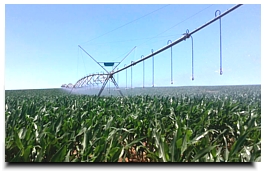 September 13, 2016 — Water Priorities: Draft Plan Heads For Completion Amid Criticism — A state task force is polishing its report to Gov. Gary Herbert on preparing for Utah’s future water needs. Some environmentalists are criticizing the group for snubbing public input. The work of the 38 people on the Governor’s Water Strategy Task Force is nearing an end, and members met to get their first look Tuesday at a report they’re hoping to finalize by the year’s end — kuer.org
September 13, 2016 — Water Priorities: Draft Plan Heads For Completion Amid Criticism — A state task force is polishing its report to Gov. Gary Herbert on preparing for Utah’s future water needs. Some environmentalists are criticizing the group for snubbing public input. The work of the 38 people on the Governor’s Water Strategy Task Force is nearing an end, and members met to get their first look Tuesday at a report they’re hoping to finalize by the year’s end — kuer.org
May 26, 2016 — Editorial: Pay for existing water systems before Lake Powell pipedream — People in charge of securing Utah's future continue to flirt with the idea of building a $2 billion-plus pipeline to connect a lake that may not be there then with people who aren't here yet. Others with a more global view are seriously considering draining Lake Powell, supposedly the saving source of water for far-away St. George via that proposed pipeline, in order to replenish the larger Lake Mead, which serves the people and agriculture of the already populous — and politically powerful — California — Sltrib.com
May 18, 2016 — [Jack Worlton, In My Opinion] The [Lake Powell] pipeline: Getting the numbers right — am writing this guest editorial to correct some problematic numbers that are often encountered in the discussions about the Lake Powell Pipeline proposal. The first problematic number concerns the question of how many people the local waters in Washington County can support — thespectrum.com
May 12, 2016 — State Panel Orders Lake Powell Pipeline Repayment Plans Released — A state panel ruled Thursday that Utah citizens have a right to know more about how they might be expected to pay for the proposed Lake Powell Pipeline — kuer.org
April 29, 2016 — Lake Powell Pipeline proposal goes to federal review — Just as some of the drought-starved states downstream are cutting back, officials in Utah say they plan to file on Monday an official proposal to dip into their rights to the Colorado River via the Lake Powell Pipeline — Thespectrum.com
March 16, 2016 —
2016 Utah Water Users Workshop reveals some new tactics — Every year, the Utah Water Users hold their workshop in St. George, and this year is no different. Sunny weather brings crowds to the area to talk water and play golf. The first day of the two-day Utah Water Users Workshop (UWUW) in St. George at the Dixie Center revealed some new tactics by some old players — The Sepctrum
February 23, 2016 — In Utah, a massive water project is gaining ground — St. George is a small, humming, desert city tucked into the southwestern corner of Utah, surrounded by red rocks. Most of its 148,000 people are retirees from the Wasatch front, attracted to its year-round pleasant climate and plentiful golf courses. But with population forecasts predicting nearly half a million St. George residents by 2060, the Washington County Water Conservancy District, which supplies the city’s water, is worried about the future — hcn.org
February 23, 2016 — Colorado, Wyoming Plan For River Water Share  — The Colorado River is arguably the most allocated river in the world. Drought and climate change have left less water to go around, and that has every state that relies on the river scrambling — NPR.org — The Colorado River is arguably the most allocated river in the world. Drought and climate change have left less water to go around, and that has every state that relies on the river scrambling — NPR.org
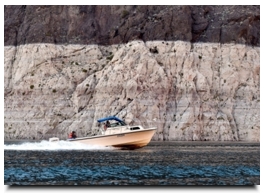 February 17, 2016 — Here's what El Nino's storms meant for Lake Mead's water levels — Even one of the strongest El Ninos on record can't seem to dent the drought on the Colorado River. The Pacific Ocean climate pattern that typically soaks the Southwest has so far only managed to produce an average year on the river that supplies 90 percent of the Las Vegas Valley's water supply. The latest federal projections released Friday call for the Colorado to carry about 94 percent of its average flow during the all-important April-July time frame, when snowmelt in the western Rockies collects in Lake Powell on the Utah-Arizona border — Las Vegas Review Journal [Mobil Link]
February 17, 2016 — Here's what El Nino's storms meant for Lake Mead's water levels — Even one of the strongest El Ninos on record can't seem to dent the drought on the Colorado River. The Pacific Ocean climate pattern that typically soaks the Southwest has so far only managed to produce an average year on the river that supplies 90 percent of the Las Vegas Valley's water supply. The latest federal projections released Friday call for the Colorado to carry about 94 percent of its average flow during the all-important April-July time frame, when snowmelt in the western Rockies collects in Lake Powell on the Utah-Arizona border — Las Vegas Review Journal [Mobil Link]
February 15, 2016 — Proposal to divert funds to help fund Lake Powell pipeline — SALT LAKE CITY (AP) A proposal in the Utah Legislature would greenlight the transfer of nearly $500 million dollars from transportation projects to water projects in a move that could funnel money to the controversial Lake Powell pipeline. The Utah Senate approved the measure on Friday on a 19-10 vote — kutv.comRelated Story
February 09, 2016 — Former Lake Powell Pipeline Leader Says Project Not Needed
More Coverage — Lake Powell Pipeline open house stirs up more unanswered questions
January 28, 2016 — Lawmakers, Utahns wary of Lake Powell Pipeline’s unknown cost — Utahns still aren't sure whether they support the construction of the Lake Powell Pipeline, but the state senate is already on track to hear a bill that could help fund it. After a Wednesday afternoon hearing that attracted an overflow crowd, the Senate Natural Resources, Agriculture, and Environment Standing Committee voted 5-2 to support SB80, which would create a water infrastructure fund and divert a 1/16-cent sales tax to it — Salt Lake Tribune
December 2015 — The Source: Lifeline in a Desert - The Colorado River in Three Stories — The Colorado River flows for over 1400 miles through four U.S. states, though it drains seven. It’s sometimes called the American Nile because nearly every drop of it is used by the civilization of the American West. Over 90% of the river is diverted and consumed by nearly 40 million people -- not all of whom live in its watershed. It’s a lifeline in a desert -- something to fight over. But when it gets squeezed through the tight canyons it has carved for itself it creates dramatic places for adventure. And it sure is pretty — upr.org
December 14, 2015 —
Governor’s Budget Recommendations Undermine Lake Powell Pipeline — St George- Backers of the Lake Powell Pipeline (Pipeline) received a setback when Governor
Gary Herbert released his 2016 Budget Recommendations on water. His recommendations lend support from the state’s highest office to advocates for fiscal responsibility and water
conservation — Citizens For Dixie's Future
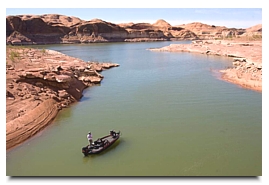 December 12, 2015 — Massive document provides clues to Utah’s Lake Powell Pipeline as guv, others question need — The recently released draft proposal for the Lake Powell Pipeline offers the most in-depth analysis of the project to date, but it may raise more questions than it answers. And that's what state officials say it is supposed to do, with the document — more than 1,300 pages long, not counting several hundred pages of supplementary material — now up for public review and comment — Salt Lake Tribune
December 12, 2015 — Massive document provides clues to Utah’s Lake Powell Pipeline as guv, others question need — The recently released draft proposal for the Lake Powell Pipeline offers the most in-depth analysis of the project to date, but it may raise more questions than it answers. And that's what state officials say it is supposed to do, with the document — more than 1,300 pages long, not counting several hundred pages of supplementary material — now up for public review and comment — Salt Lake Tribune
[  Print PDF] Print PDF]
December 10, 2015 — Gov. Herbert’s New Budget: Education Before Water Development —Governor Herbert has thrown a wrench into water salesmen’s plans to hijack education funding for water development in the 2016 Legislature. The Governor’s new budget for 2016 proposes to increase funding for education and bring sanity to the way Utah manages water — UtahRivers.org
December 09, 2015 — Water Realities — There are some areas in which California's example is not always the best to follow—but conservation isn't one. Water districts there have to meet conservation targets or risk fines—and on the whole, the Golden State has voluntarily cut back water consumption by up to 31 percent since 2013, according to the Los Angeles Times. But here in Utah, all eyes are on a $1 billion Lake Powell Pipeline project — CityWeekly.net
December 03, 2015 —COLORADO RIVER: Utah advances hot-button proposal for Lake Powell pipeline
— E&E
November 30, 2015 — Editorial: Lake Powell Pipeline must have realistic financing plan in place — It should not require a platoon of university economists, active and emeritus, to raise such an obvious point. But before the state of Utah floats maybe $1.8 billion in taxpayer-backed bonds to build the long-planned Lake Powell Pipeline, somebody had better have a pretty solid idea of how — and by whom — that debt will be repaid — Salt Lake Tribune [Related story — The Lake Powell Pipeline, Part III: An analysis of the proponents’ arguments]
November 28, 2015 — Op-ed: If Lake Powell pipeline is built, will Colorado River provide? — As the Utah Legislature gears up for the 2016 session, funding for a mammoth government project hangs over the heads of Utah taxpayers. The Lake Powell Pipeline project, the largest new diversion of the Colorado River estimated to cost anywhere from $2 billion to $3 billion, would pump water 2,000 feet uphill, over 140 miles of Southern Utah desert to provide additional water to Washington County, which has one of the worst records of water waste in the West — Salt Lake Tribune
November 24, 2015 — Letter: Lake Powell Pipeline a big gamble — sltrib.com
[Related Information] The Lake Powell Pipeline, An analysis of the proponents’ arguments — suindependent.com
October 26, 2015 — University economists challenge Lake Powell Pipeline payback proposal — f Washington and Kane counties were to actually borrow the estimated $1.4 to $1.8 billion it will take to build the Lake Powell Pipeline, paying it back would become so expensive for local water users that there wouldn't even be any demand for the water, according a group of economists requesting more analysis of the proposed project — theSpectrum.com
May 08, 2015 — [Editorial] Utah lacks good numbers on water needs — For years, conservation groups and good government activists have questioned the numbers used by the Utah Division of Natural Resources and others to project the need for some $33 billion in environmentally disruptive projects to meet the water demands of a rapidly growing state population — Sltrib.com
May 05, 2015 — [Utah] Audit reveals flawed projections on Utah's water needs — SALT LAKE CITY — A legislative audit released Tuesday concludes state water managers have no real idea how much water is being used across Utah so the projection that developed supplies will be exhausted by 2040 is not reliable — DesertNews.com [Related Story, HCN]
May 04, 2015 — Water Pipeline Triggers Debate About Utah's Future — In a parched corner of the nation's second driest state, the Virgin River delivers life-giving water to wildlife, farms and increasing numbers of people. Ron Thompson sees a future when four times as many people could be living here in St. George, and they’ll need more water than the Virgin can provide. That’s why he wants the Lake Powell Pipeline — Kuer.org 
 April 14, 2015 — Salt Lake City issues water-shortage advisory — Salt Lake City took the first official step Monday to notify its residents of possible water shortages this summer. Mayor Ralph Becker issued a "stage one advisory," the first of five steps in the city's contingency plan for dealing with drought . . . Steve Erickson, the Utah Audubon Council's legislative advocate, called the city's advisory "an appropriate move to get people's attention. It's been a grim winter. We're likely to see this get worse so people need to start thinking about how they can conserve water — not just in Salt Lake City but around the state — Salt Lake Tribune
April 14, 2015 — Salt Lake City issues water-shortage advisory — Salt Lake City took the first official step Monday to notify its residents of possible water shortages this summer. Mayor Ralph Becker issued a "stage one advisory," the first of five steps in the city's contingency plan for dealing with drought . . . Steve Erickson, the Utah Audubon Council's legislative advocate, called the city's advisory "an appropriate move to get people's attention. It's been a grim winter. We're likely to see this get worse so people need to start thinking about how they can conserve water — not just in Salt Lake City but around the state — Salt Lake Tribune
March 03, 2015 — Editorial: Utah’s water plan needs to account for climate change — Despite the growing research that less rain and snow will fall here in the coming decades, the people planning Utah's water future have not adjusted their models. A recent study from NASA's Goddard Institute for Space Studies has offered a stark prediction: If the current rates of human-generated emissions continues, there is an 80 percent chance of a 30- to 35-year megadrought in the American southwest. "We will still have natural variability, but happening with a much drier baseline," the study's lead author said. This comes on top of various other predictions that climate change will make Utah a hotter, drier place — Sltrib.com
February 28, 2015 — Growing Utah town wants even more water via pipeline — ST. GEORGE, Utah – This corner of the Mojave Desert that locals call "Color Country" is a fast-growing little retirement haven with a water problem. With an application now before federal regulators, state and county officials hope to assure continued growth via a 140-mile pipeline from the Colorado River at Lake Powell — Azcentral.com
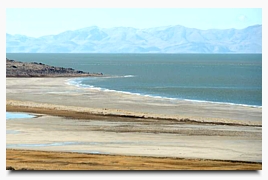 February 22, 2015 — Will Utah be ready for a drier, hotter climate?— The specter of drought hanging over the Southwest is already pretty dire, with forests drying out into beetle-killed tinderboxes and reservoir levels plunging. But the current dry spell may barely register in comparison with what has happened in the distant past and could happen in the near future, according to research released this month. And we may have ourselves to blame — sltrib.com
February 22, 2015 — Will Utah be ready for a drier, hotter climate?— The specter of drought hanging over the Southwest is already pretty dire, with forests drying out into beetle-killed tinderboxes and reservoir levels plunging. But the current dry spell may barely register in comparison with what has happened in the distant past and could happen in the near future, according to research released this month. And we may have ourselves to blame — sltrib.com
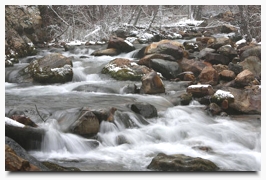 December 13, 2014 — The water question: Tapping into one of Utah's biggest challenges — SALT LAKE CITY — As the snow this weekend finally begins to fall in the mountains and Utah hopes for a banner snowpack this year, water managers know one season will not douse the challenges the state faces when it comes to water. Utah is wrestling with a multibillion-dollar problem with solutions that are rarely appealing — pipeline construction, higher water rates or restrictions on watering — but they are priorities that may emerge as the state's leaders begin to grapple with the enormity of the challenge ahead — DesertNews.com
December 13, 2014 — The water question: Tapping into one of Utah's biggest challenges — SALT LAKE CITY — As the snow this weekend finally begins to fall in the mountains and Utah hopes for a banner snowpack this year, water managers know one season will not douse the challenges the state faces when it comes to water. Utah is wrestling with a multibillion-dollar problem with solutions that are rarely appealing — pipeline construction, higher water rates or restrictions on watering — but they are priorities that may emerge as the state's leaders begin to grapple with the enormity of the challenge ahead — DesertNews.com
[More Coverage — The water question: The staggering problem of determining water rights — DesertNews.com]
Archives Home Page
Great Basin Water Network Home Page
|
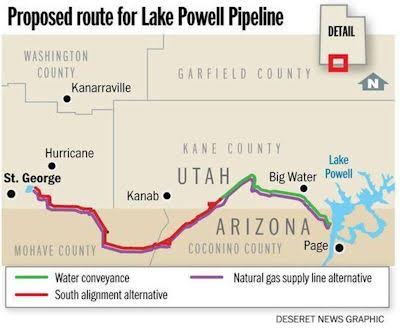
 January 28, 2018 —
January 28, 2018 —  January 23, 2017 —
January 23, 2017 — January 16, 2018 —
January 16, 2018 —  January 06, 2018 —
January 06, 2018 —  October 20, 2017 —
October 20, 2017 — September 13, 2016 —
September 13, 2016 —  February 17, 2016 —
February 17, 2016 —  December 12, 2015 —
December 12, 2015 —  April 14, 2015 —
April 14, 2015 —  February 22, 2015 —
February 22, 2015 —  December 13, 2014 —
December 13, 2014 —